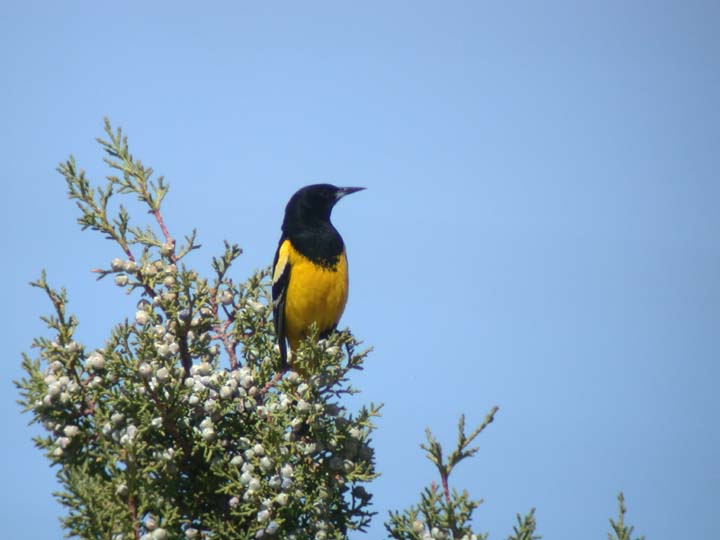|
Utah Bird Profile |
|||||
|
Name Roots: (Gr. ikteros, "jaundice, yellow" - for the Paris brothers) |
|||||
| In Utah: |
 by Dona Hilkey |
||||
| Nesting, feeding, characteristic behaviors: |
Nests in a deciduous tree or in a yucca at a height of 4-18 feet, in a
pendant nest. This species is a rare cowbird host. During the breeding
season, this species is an omnivore: lower-canopy
forager. |
||||
| Habitat: | Breeds in Utah in low desert scrub
and pinyon-juniper habitats. |
||||
| How to find: |
This beautiful yellow and black oriole is listed as an "uncommon summer"
resident. “It appears that a limited but consistent population occurs in
that region that lies between Rangley, Colorado, and Ouray,
Utah, and probably has been there at least in the 40-year period since Twomey
described it in 1942.” (White, Clayton, Et Al., Great Basin Naturalist, Vol. 43,
No. 4, page 726, October 1983,). Indeed, the Utah Bird Latilong Distribution,
published in 1981 by the Utah Division of Wildlife Resources indicates a
persistent population in desert and pinion-juniper habitats all along the
eastern part of Utah adjacent to Colorado. From my own experience with this
species I have 12 records from the Lytle Ranch Preserve in southwestern Utah,
the earliest dated April 17 and the latest August 17. The best times to observe
this species at this location is during the months of May, June and July. I have
observed it along the Beaver Dam Slope on the road in to the Lytle Preserve
where I presume it is nesting in the Joshua Trees. After nesting is over I
assume some of them move into the Beaver Dam Wash area where I have observed
them feeding on the figs and the mulberries at the preserve. ~ Merrill Webb |
||||
|
|
USGS Profile
(Geological Survey) |
US Winter Range |
US
Summer Range Map | |
|||||
|
|||||
|
Abbreviations | References | Legend
|
|||||